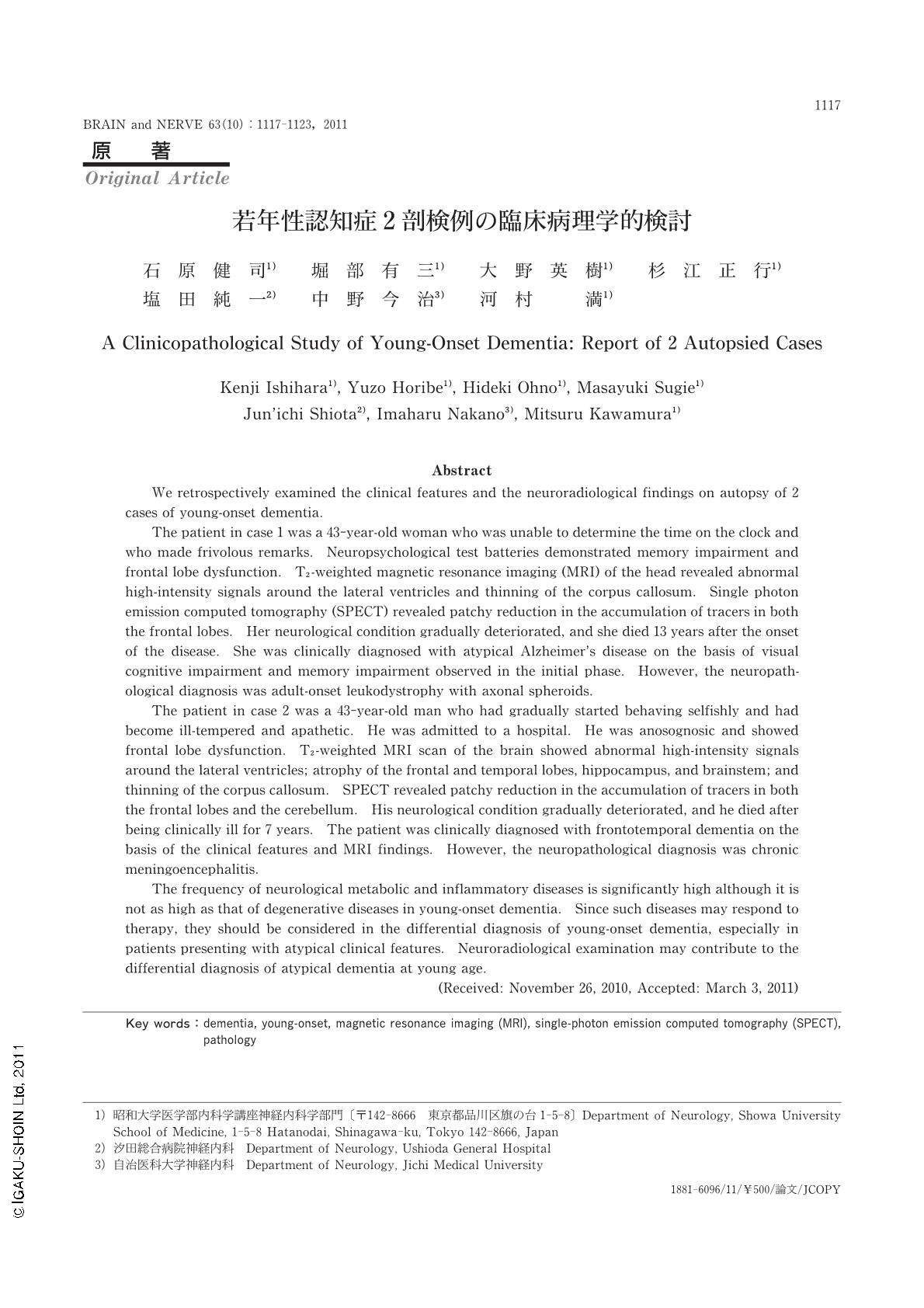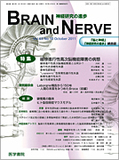Japanese
English
- 有料閲覧
- Abstract 文献概要
- 1ページ目 Look Inside
- 参考文献 Reference
はじめに
65歳以下の早期発症例についても,認知症をきたす原因疾患としては,Alzheimer病や前頭側頭葉変性症などの変性性疾患,脳血管性認知症が多いことが各国から報告されている1-5)。これらの疾患は典型的な症状,画像所見を示す場合には臨床診断も困難ではないが,非典型的な症状,経過を示す症例では診断に難渋することも少なくない。われわれは当初変性性疾患と診断した40歳代発症の認知症剖検例2例を対象に,臨床症状および経過,画像所見を後方視的に検討し,鑑別診断で留意すべき点について考察した。
Abstract
We retrospectively examined the clinical features and the neuroradiological findings on autopsy of 2 cases of young-onset dementia.
The patient in case 1 was a 43-year-old woman who was unable to determine the time on the clock and who made frivolous remarks. Neuropsychological test batteries demonstrated memory impairment and frontal lobe dysfunction. T2-weighted magnetic resonance imaging (MRI) of the head revealed abnormal high-intensity signals around the lateral ventricles and thinning of the corpus callosum. Single photon emission computed tomography (SPECT) revealed patchy reduction in the accumulation of tracers in both the frontal lobes. Her neurological condition gradually deteriorated, and she died 13 years after the onset of the disease. She was clinically diagnosed with atypical Alzheimer's disease on the basis of visual cognitive impairment and memory impairment observed in the initial phase. However, the neuropathological diagnosis was adult-onset leukodystrophy with axonal spheroids.
The patient in case 2 was a 43-year-old man who had gradually started behaving selfishly and had become ill-tempered and apathetic. He was admitted to a hospital. He was anosognosic and showed frontal lobe dysfunction. T2-weighted MRI scan of the brain showed abnormal high-intensity signals around the lateral ventricles; atrophy of the frontal and temporal lobes, hippocampus, and brainstem; and thinning of the corpus callosum. SPECT revealed patchy reduction in the accumulation of tracers in both the frontal lobes and the cerebellum. His neurological condition gradually deteriorated, and he died after being clinically ill for 7 years. The patient was clinically diagnosed with frontotemporal dementia on the basis of the clinical features and MRI findings. However, the neuropathological diagnosis was chronic meningoencephalitis.
The frequency of neurological metabolic and inflammatory diseases is significantly high although it is not as high as that of degenerative diseases in young-onset dementia. Since such diseases may respond to therapy, they should be considered in the differential diagnosis of young-onset dementia, especially in patients presenting with atypical clinical features. Neuroradiological examination may contribute to the differential diagnosis of atypical dementia at young age.
(Received: November 26,2010,Accepted: March 3,2011)

Copyright © 2011, Igaku-Shoin Ltd. All rights reserved.


